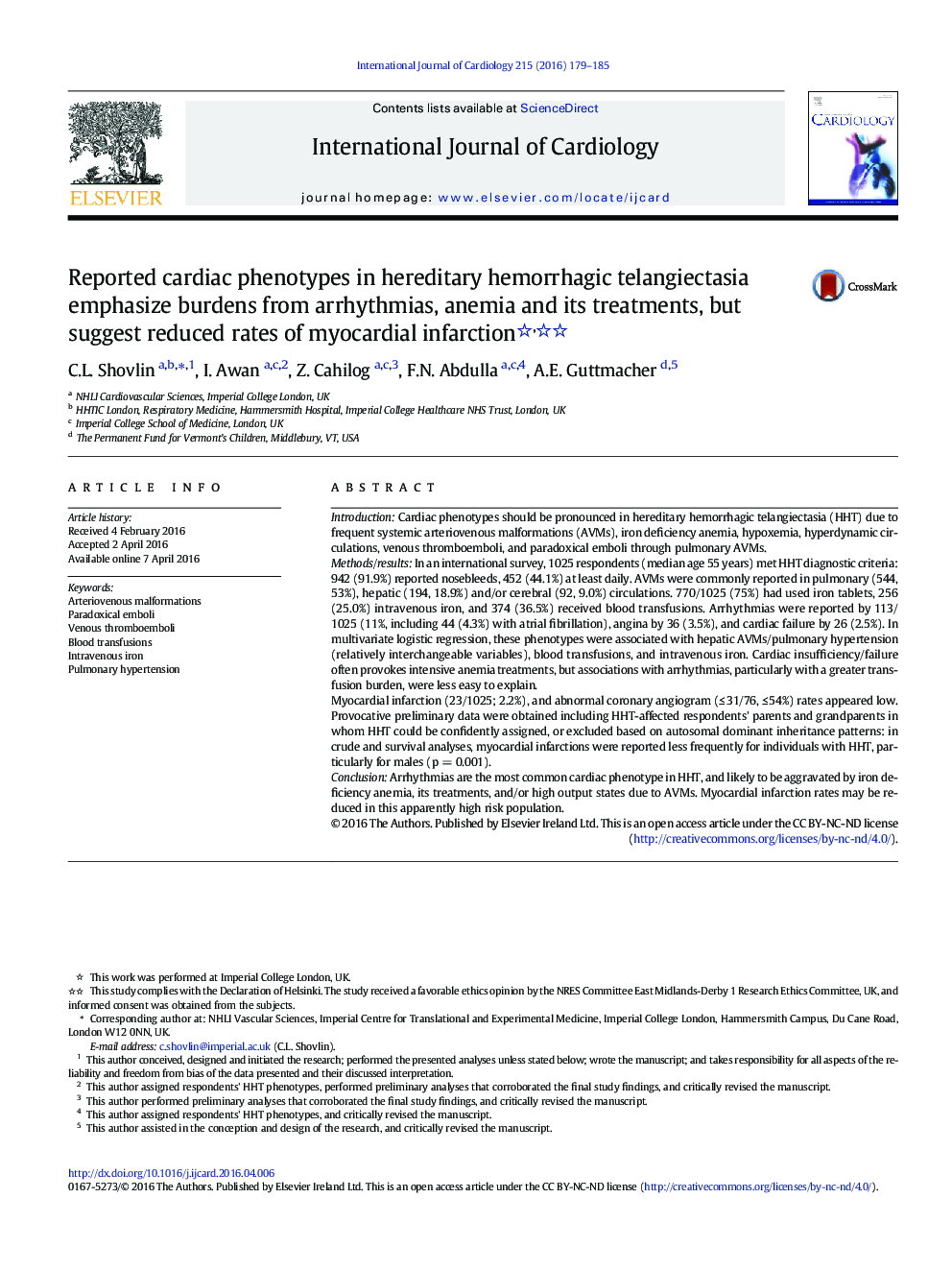| کد مقاله | کد نشریه | سال انتشار | مقاله انگلیسی | نسخه تمام متن |
|---|---|---|---|---|
| 5963889 | 1576134 | 2016 | 7 صفحه PDF | دانلود رایگان |
IntroductionCardiac phenotypes should be pronounced in hereditary hemorrhagic telangiectasia (HHT) due to frequent systemic arteriovenous malformations (AVMs), iron deficiency anemia, hypoxemia, hyperdynamic circulations, venous thromboemboli, and paradoxical emboli through pulmonary AVMs.Methods/resultsIn an international survey, 1025 respondents (median age 55 years) met HHT diagnostic criteria: 942 (91.9%) reported nosebleeds, 452 (44.1%) at least daily. AVMs were commonly reported in pulmonary (544, 53%), hepatic (194, 18.9%) and/or cerebral (92, 9.0%) circulations. 770/1025 (75%) had used iron tablets, 256 (25.0%) intravenous iron, and 374 (36.5%) received blood transfusions. Arrhythmias were reported by 113/1025 (11%, including 44 (4.3%) with atrial fibrillation), angina by 36 (3.5%), and cardiac failure by 26 (2.5%). In multivariate logistic regression, these phenotypes were associated with hepatic AVMs/pulmonary hypertension (relatively interchangeable variables), blood transfusions, and intravenous iron. Cardiac insufficiency/failure often provokes intensive anemia treatments, but associations with arrhythmias, particularly with a greater transfusion burden, were less easy to explain.Myocardial infarction (23/1025; 2.2%), and abnormal coronary angiogram (â¤Â 31/76, â¤Â 54%) rates appeared low. Provocative preliminary data were obtained including HHT-affected respondents' parents and grandparents in whom HHT could be confidently assigned, or excluded based on autosomal dominant inheritance patterns: in crude and survival analyses, myocardial infarctions were reported less frequently for individuals with HHT, particularly for males (p = 0.001).ConclusionArrhythmias are the most common cardiac phenotype in HHT, and likely to be aggravated by iron deficiency anemia, its treatments, and/or high output states due to AVMs. Myocardial infarction rates may be reduced in this apparently high risk population.
Journal: International Journal of Cardiology - Volume 215, 15 July 2016, Pages 179-185
